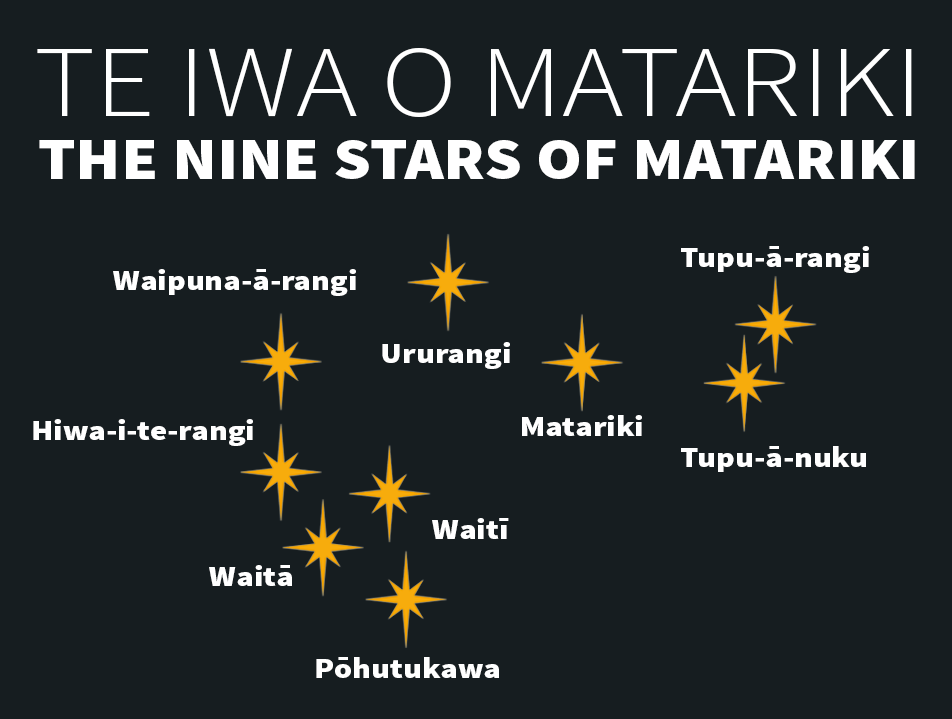Matariki is the Māori name for a cluster of stars. This year, from July 6 to 9, Matariki will re-appear in the dawn sky – signalling the start of the Māori New Year.

It is a time to celebrate new life, to remember those who’ve passed and to plan for the future. And it’s a time to spend with whānau and friends – to enjoy kai (food), waiata (song), tākaro (games) and haka.
Our tūpuna (ancestors) would look to Matariki for help with their harvesting. When Matariki disappeared in April/May, it was time to preserve crops for the winter season. When it re-appeared in June/July, tūpuna would read the stars to predict the upcoming season – clear and bright stars promised a warm and abundant winter while hazy stars warned of a bleak winter.
Because Māori follow the Māori lunar calendar, not the Gregorian calendar, the dates for Matariki change every year.
It is a common belief that Matariki has seven visible stars. But Matariki actually has nine visible stars, according to leading Māori astronomer, Dr Rangi Matamua, who has been researching Matariki for over 30 years. As part of his research, Dr Matamua found that some of his own tūpuna were able to see nine stars.
The nine visible stars include: Matariki, Tupuārangi, Waipuna-ā-Rangi, Waitī, Tupuānuku, Ururangi, Waitā, Pōhutukawa and Hiwa-i-te-Rangi.
Each star holds a certain significance over our wellbeing and environment, as seen from the Māori view of the world.
